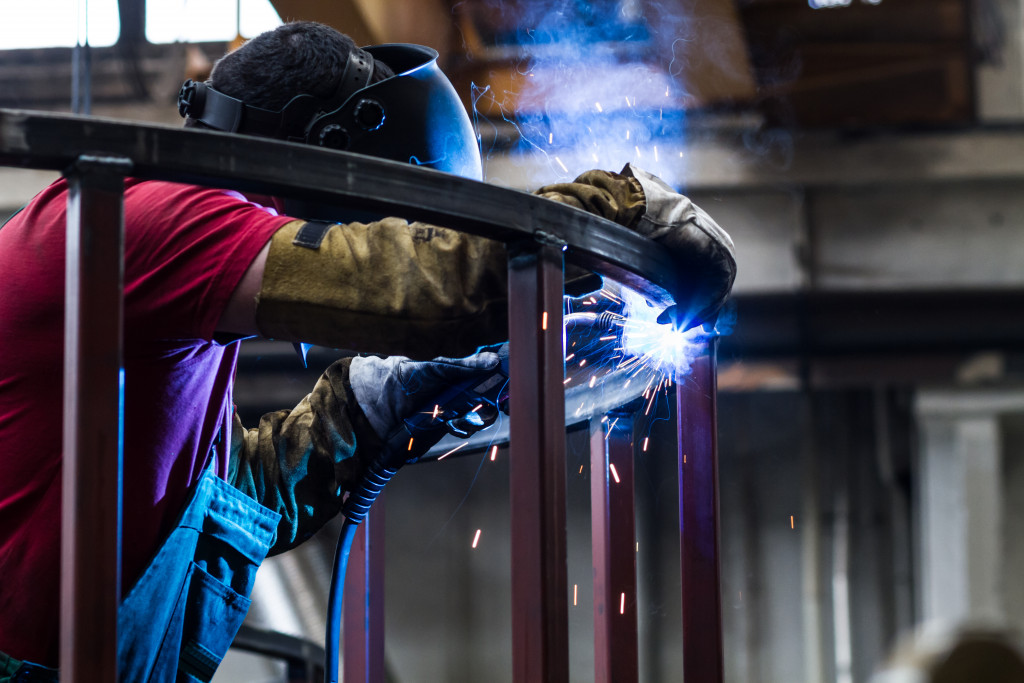The manufacturing industry is among the biggest industries in the world. At the same time, it faces among the biggest problems in the business scene. From automation concerns to possible workplace injuries among workers, many issues test the resiliency of the sector. To overcome these common issues, many organizations make it a priority to focus on ergonomics improvements.
The Science of Ergonomics: An Overview
Simply put, ergonomics is the branch of science concerned with engineering and designing the workplace for improved human well-being and performance. To achieve that, it merges the principles of anatomy, industrial design, physiology, sociology, and other related sciences to create products and design offices that help minimize workers’ fatigue and discomfort. The results include improved productivity, better performance, and fewer absentees.
There are different types of ergonomic products you can find in the workplace. Chairs with adjustable lumbar support and headrest are among them. Ergonomic split keyboards that put your wrists at a better typing position are another. Even light fixtures secure sufficient lighting to reduce the risks of eye strain and headaches among workers.
Ergonomics in the Manufacturing Industry: Why Invest in Ergonomics Improvement?
Generally, ergonomics is important in all industries. But it is especially needed in sectors that normally require their workers to perform continuous and consistent movements. Normally, when a person performs repetitive postures and movements, this creates muscle fatigue in the area involved in doing the repetitive tasks. This often leads to muscle pain and less productivity.
Since the manufacturing operations often involve frequent lifting, pushing, pulling, and carrying heavy loads for long periods of time, workers in the sector are more at risk of injury, especially musculoskeletal disorders. Ergonomics improvements can help reduce these hazards and provide manufacturers with a safe and more conducive workplace.

Benefits of Ergonomics
-
Improved safety
The very goal of ergonomics is to create offices that are safe for workers. People engaged in manufacturing operations are vulnerable to illnesses and injuries. Common health risks in the sector include slips, falls, and machine malfunctions. Since ergonomics products are designed to allow good posture and better movements during work, they also reduce accidents in the workplace.
-
Enhanced productivity
One of the most important benefits linked to ergonomics solutions is improved productivity. Since ergonomics products are designed to reduce bodily discomfort, they enable workers to avoid distractions and keep their focus on the tasks at hand. Moreover, some ergonomic innovations, such as the electric cylinder actuator, already allow the automation of repetitive tasks, promising improved efficiency at work.
-
Lower costs
Accidents and injuries are pretty expensive. Businesses must pay the worker’s compensation claims. At the same time, they must deal with the sudden labor shortage and changes in work shifts. Through ergonomics improvements, manufacturers can avoid these problems and reduce the number of absentees. The more comfortable the work environment is, the fewer reasons for employees to ditch their shifts.
Ergonomics Checklist: What to Get for Your Workspace?
-
Lifting aids and transportation devices
Frequent lifting and transporting of objects are common in manufacturing operations. To prevent muscle fatigue among your workers, the best remedy is to invest in high-performance lifting and transportation aids.
Among your best choices include carts with ergonomically curved handles for better handling and scissor lift tables. Other options also include pneumatic balancers and heavy-duty manipulators.
-
Ergonomic chairs and tables
Simply sitting doesn’t promise a comfortable day at work. Without back support and adequate space, employees can suffer from backaches and neck pains. Ergonomic chairs and tables can help them maintain proper posture and avoid muscle fatigue.
Generally, ergonomics chairs come with backrests, seat tilts, armrests, and wheels. All these features help support the natural spine position of the body and maximize maneuverability while sitting. Meanwhile, ergonomics tables come with adjustable heights to accommodate workers of every size. They also often have titled surfaces for easy reach of objects.
-
Ergonomic lighting
Lighting also plays a role in workers’ comfort and safety. When the office is too dim or too bright, employees will suffer from eye strain and headaches. Likewise, such affects performance and can lead to errors in operations.
The best solution is to get smart lighting innovations that promise proper adequate lighting. You can also turn to natural lighting by maximizing windows and open spaces. If you have monitors, get ones that automatically adjust their brightness to match the surrounding area where they are located.
The manufacturing industry has its fair share of challenges. You can make things easier by investing in ergonomics improvements.

